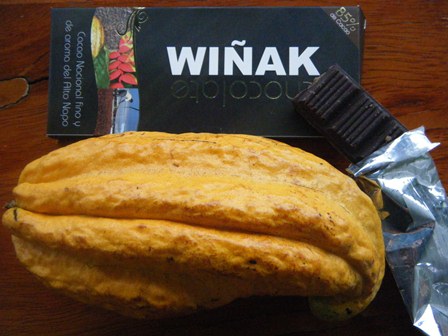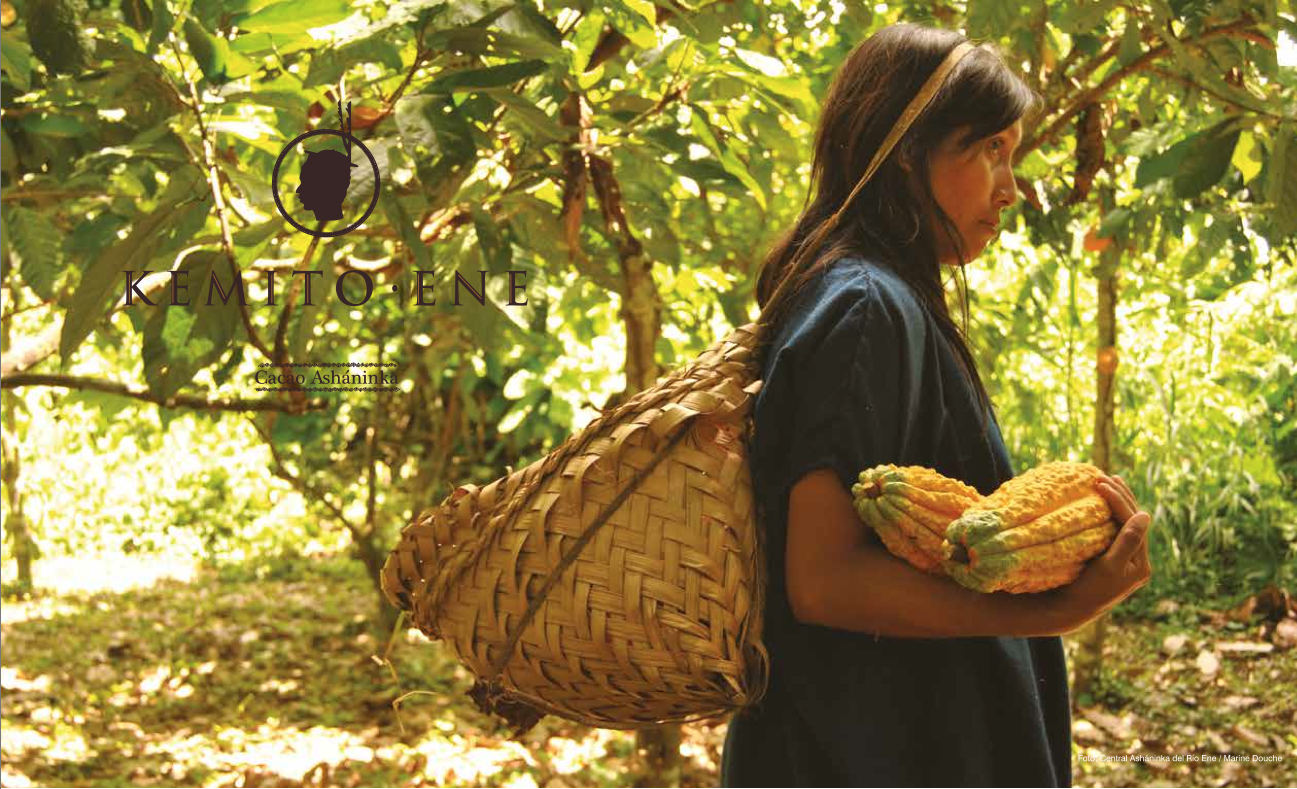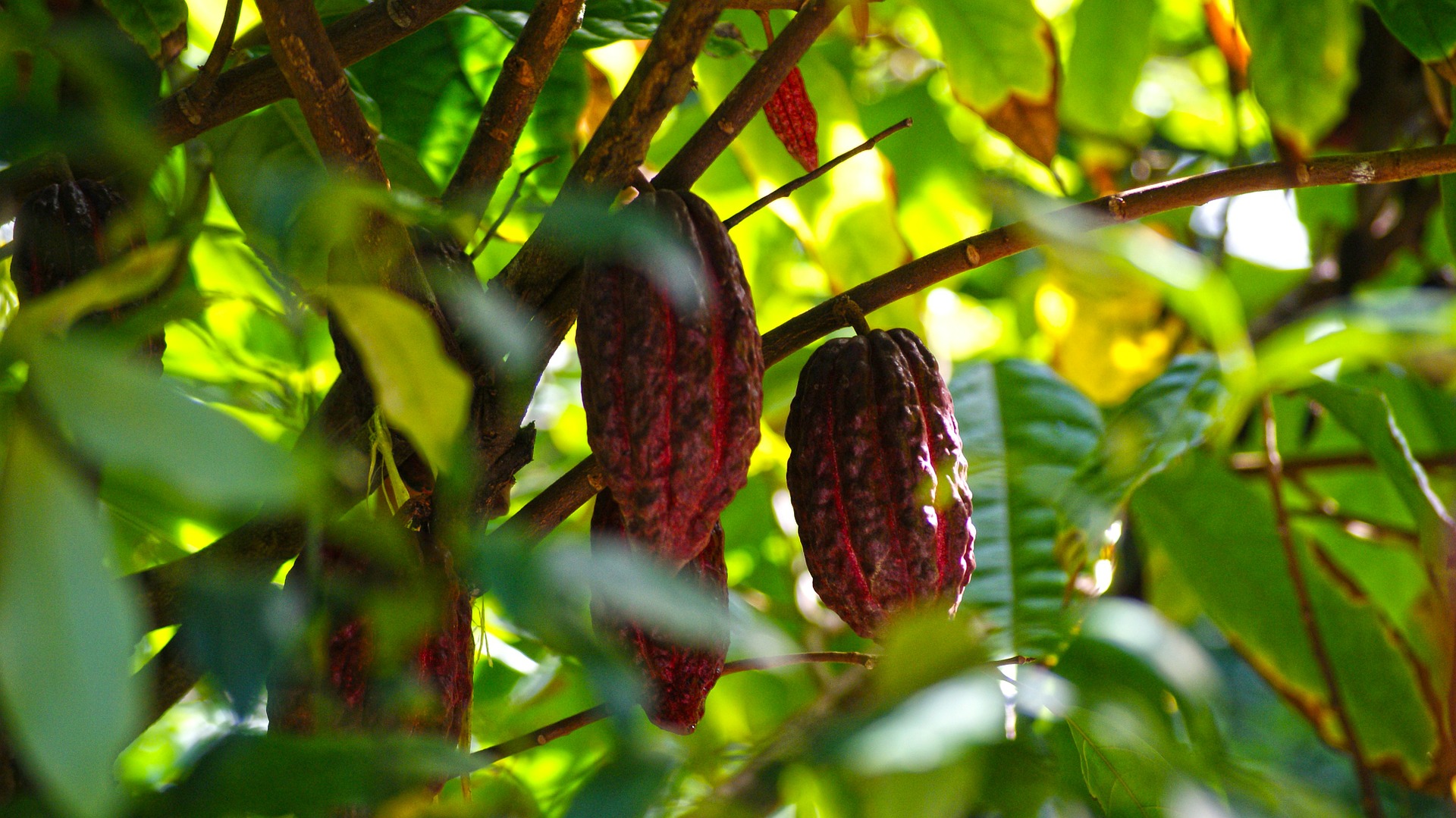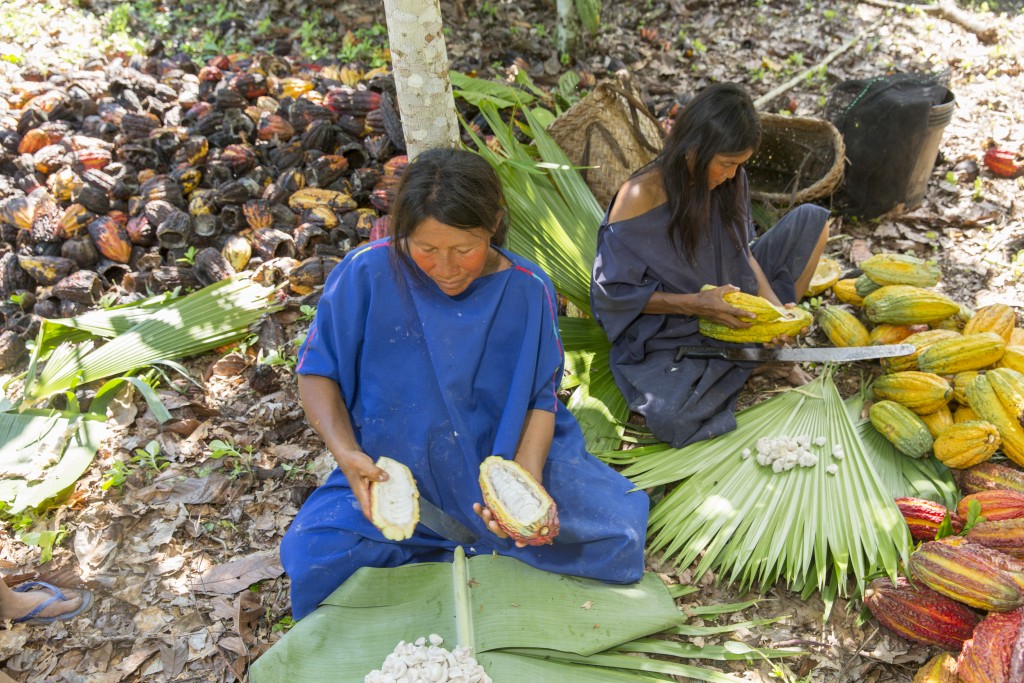In our last blog, Lourdes Páez explained the history of cocoa in Ecuador, and the challenges and opportunities in its production today. Here, we introduce you to some native Amazonian cocoa producers, and to the hope that proper cocoa production holds for them, as well as for the futures of chocolate and conservation.
by Anne Grigg
Perhaps it’s the bitter, smooth luxury, or maybe it’s the exotic wilds of the Amazon, but a certain mystery surrounds the origins of chocolate. Originating in the rainforests east of the Andes, the Cocoa tree, Theobroma cacao, naturally occurs in the sun-dappled shade of the Amazon. While the overwhelming majority of the world’s commodity cocoa is now produced in Africa and Indonesia, over 75% of the world’s highest quality, fine flavor cocoa continues to come from the countries ringing the Amazon basin: especially Ecuador, as well as Colombia, Peru, Venezuela and Bolivia.

As a reaction to a chocolate world dominated by ordinary bulk cocoa, there has been an uptick in adventure chocolatiers, searching for original fine flavor cocoa varieties of cocoa in their pre-colombian cradle. Anthony Bourdain dedicated an episode of his CNN Series “Parts Unknown” to Peruvian cocoa, and Outside Magazine’s Rowan Jacobsen ventured into the Bolivian Amazon to document the business behind wild cacao, which, along with Bourdain’s Pure Nacional, was previously believed to be extinct.
Indeed the origin of chocolate easily awakens our romantic spirit of exploration and discovery. However, indigenous Amazonian groups have lived amongst these trees for centuries. As members of Wiñak, an association of Kichwa indigenous farmers in the Ecuadorian Amazon, put it, “for us, the Cocoa crop is a cultural identity.” High quality cacao is not the new development; the market is. As Jacobsen said in his article, “Heart of Dark Chocolate,” “(this cocoa) [Amazon wild cocoa] is some of the finest in the world, but it’s worth lots of money to the rest of the world only if it’s perfectly fermented and dried.” This is where indigenous associations like these come in, working together to bring out the quality in the beans through improved cultivation and processing. The higher prices for well-managed quality cocoa can provide a market-based approach to conserving the Amazon, and to improving communities’ income and food sovereignty.

If this assertion sounds as romantic as the jungle from which it arrives: here’s why it works. In a largely mechanized world, cacao processing is still very labor intensive. After being removed from the trunks, the pods have to be opened by hand. The precious seeds then have to be removed from the pulp that encases them, fermented, and dried. This need for on-site processing introduces the space for women to play a critical role in the family’s income. As part of their social initiatives, Wiñak, which encompasses 211 indigenous, Kichwa community members, is made up of 70% women, who add crucial value to their raw product.
In addition to these social benefits, indigenous production is able to strengthen environmental sustainability, as cacao, (being a native to the Amazon) thrives in the shade. Although many bulk cocoa varieties are grown in direct sunlight in order to meet high demand, but at the expense of flavor. This means that there is a tasty incentive to preserve forests, or to incorporate a diversity of trees in mixed planting systems. Farmers from Wiñak highlight this opportunity for agro-forestry and increased biodiversity, which allows them to not only increase income and food sovereignty by planting other cash and food crops, but also to “replicate the characteristics of a primary forest.”
Kemito Ene, an association of Asháninka indigenous communities in Peru, takes this environmental potential a step further. In addition to being Organic and Fair Trade certified, the producers of Kemito Ene are committed to zero deforestation, not felling forests for new cocoa plantations. They try to limit expanded production to old plantations, thus transforming the environmentally harmful practices of the past into new opportunities for them, as well as for the more than 500,000 hectares of forest in which they live and work.

While these practices can revive cleared land with increased biodiversity, ARCASY, an association of the Yuracaré people in the Bolivian Amazon, have no need to “replicate…the primary forest.” These producers are Fairwild Certified, meaning that they are certified to harvest the wild cocoa that still grows in their territories, and to do so in a manner that sustains the forest’s offering. This is the same type of wild cocoa that Jacobsen wrote about as a having untapped value, and with training, members of ARCASY have been able to improve the quality of their collection and processing practices, consolidating a sustainable system for the futures of their families, of their Amazonian homes, and of all of our tastebuds.
Currently, most of the cocoa market does not recognize the value of high quality cocoa, nor of its producers’ practices. While some fine flavor producers are able to receive a premium price that reflects the extra effort, environmental benefits and exceptional quality of their product, most do not. Without such an incentive from consumers, the forest, and cocoa farmers’ income suffer.
As for the consumer’s interests, Lourdes Páez emphasized that high quality cocoa could become increasingly scarce.
While poorly produced cocoa leads to poor taste, these native Amazonian producers offer a deliciously irresistible solution to the longevity of our chocolate and natural worlds. When cocoa is raised and collected by cultures flowering from the same Amazonian canopy, chocolate’s cultural and historical origin is not only a romantic notion, but a promising reality.






One thought on “Cocoa: From Native producers in its Native Land”